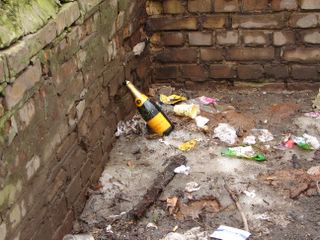Dream a Little Dream of Krasnoyarsk
Irkutsk to Krasnoyarsk - 19 hrs 11 minutes by train
Two and a half days in Krasnoyarsk can pass pretty quickly if you know what you're doing. It also helps if you don't know what you're doing too - large portions of time slip out of your control in that case.
Krasnoyarsk is kind of an attractive city perched on the banks and cliffs of the Yenisey River. It's got a couple of charming nineteenth century streets that fill in as the main promenade. I got to windowshop to the refrains of antique american jazz and swing classics (hence the title for the post) - the whole street is wired for sound.
The city is an important cultural center in Siberia, as evidenced by the plethora of events. I chose Prokofiev's "Romeo and Juliet" at the central theater over Ultimate Fighting at a nearby club. The choice was made mainly on the assumption that the ballet crowd would be a lot less likely to get drunk and violent after the show. The total fracas at the coat check, however, proved I was at least half wrong about ballet lovers.
I sampled some of the natural splendors as well, a decidedly less successful endeavor. There's a large national park here that showcases a series of strange volcanic rock formations. The park is set back from the road some 7km, and spreads over 17,000 hectares - many of them viciously uphill. I'm not exactly sure what a hectare is, but I'm quite sure that I stepped on each and every one of them in the 8+ hours it took to get into - and then out of - the park.
I even bought a little map, but couldn't find my way around this enormous reserve. The winter path was really the only option and didn't correspond to the map. Like any good Russian place, there were signs everywhere describing all manner of prohibited activities - but not one sign offering directions. Or even announcing that one exit on the map was completely impassable. I had to turn around and head back out the way I came in after hours of trekking.
Adding to the problem, the volcanic rock formations were nice but nowhere near "8th Wonder of the World" status as described in so many places here. Perhaps no one can really agree on the first 7 anymore, but that doesn't mean we should allow a million-way tie for all the pretenders to 8th place. And I, for one, will gladly strike the moderately impressive and inaccessible rocks in Krasnoyarsk from the list.
The real problem with the park experience, however, is that I think I broke something. My sense of adventure, perhaps. My love of wandering around in nature, more likely. But it was ugly when it happened - it involved tearing up a map and screaming obscenities in a silent mountain top.
By the time I got back to the hotel around 9pm (still daylight!) I was in a very "take no crap" mood. I marched up the desk and laid out my commands: the banya for an hour, two bottles of mineral water, and a table at the restaurant afterwards. I didn't wait for an answer and just marched off. It all went as ordered - and went a long way to restoring a feeling of being in control.






